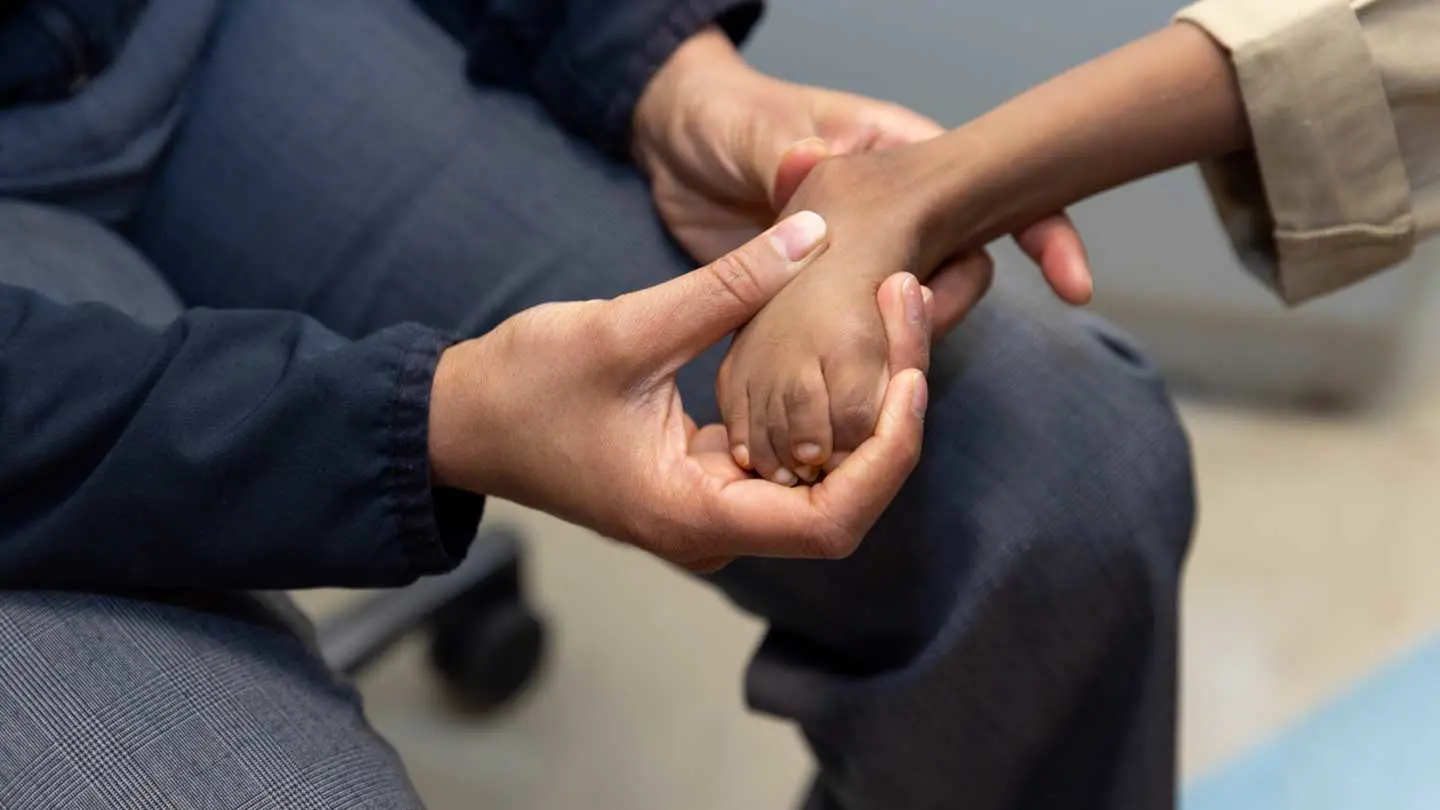When Sheena C. Ranade, MD, Assistant Professor of Orthopedic Surgery at the Icahn School of Medicine at Mount Sinai, first began as an attending at The Mount Sinai Hospital, she had a vision—an integrative clinic that addressed the complex needs of cerebral palsy patients.
During her fellowship at the Children’s Hospital of Philadelphia, Dr. Ranade observed a multidisciplinary cerebral palsy clinic that included rehabilitation services, orthopedics, and neurology, as well as physical therapy and occupational therapy. There, patients were able to come into one room and see several different specialists at once. For complex neuromuscular patients, many of whom are on ventilators or have feeding tubes, transportation to and from appointments can be an ordeal. A clinic that would allow children to see multiple specialists during one visit would be a welcome alleviation for caregivers.
To create this ambitious program, Dr. Ranade partnered with the Pediatric Visiting Doctors and Complex Care Program at Mount Sinai Kravis Children’s Hospital. The program provides family-centered care to pediatric patients with complex medical conditions who reside in East and Central Harlem, both at home and in the office. Working closely with Elaine P. Lin, MD, the program’s Director, a space was secured for patient visits. Simultaneously, Dr. Ranade recruited providers who were interested in volunteering to support these patients.
Launching the Complex Neuromuscular Care Clinic
In August 2019, the Complex Neuromuscular Care Clinic opened. Meeting one to two times a month, the clinic manages patients with cerebral palsy, muscular dystrophies, spina bifida/myelomeningocele, and those with complex care needs secondary to chromosomal abnormalities.
Patients arrive at The Mount Sinai Hospital’s pediatric practice in the morning and receive preliminary assessments—including X-rays and laboratory testing—and then present to the clinic where they can see several different physicians. Approximately 14 medical providers offer patient appointments in complex care pediatrics, dentistry, developmental psychiatry, endocrinology, neurology, neurosurgery, nutrition, orthopedic surgery, orthotics, pulmonology, and urology. Social workers and a wheelchair accommodation specialist are also available.

Dr. Ranade examines the ankle range of motion of Saidou Diallo, a two-year-old patient with spastic quadriplegia.
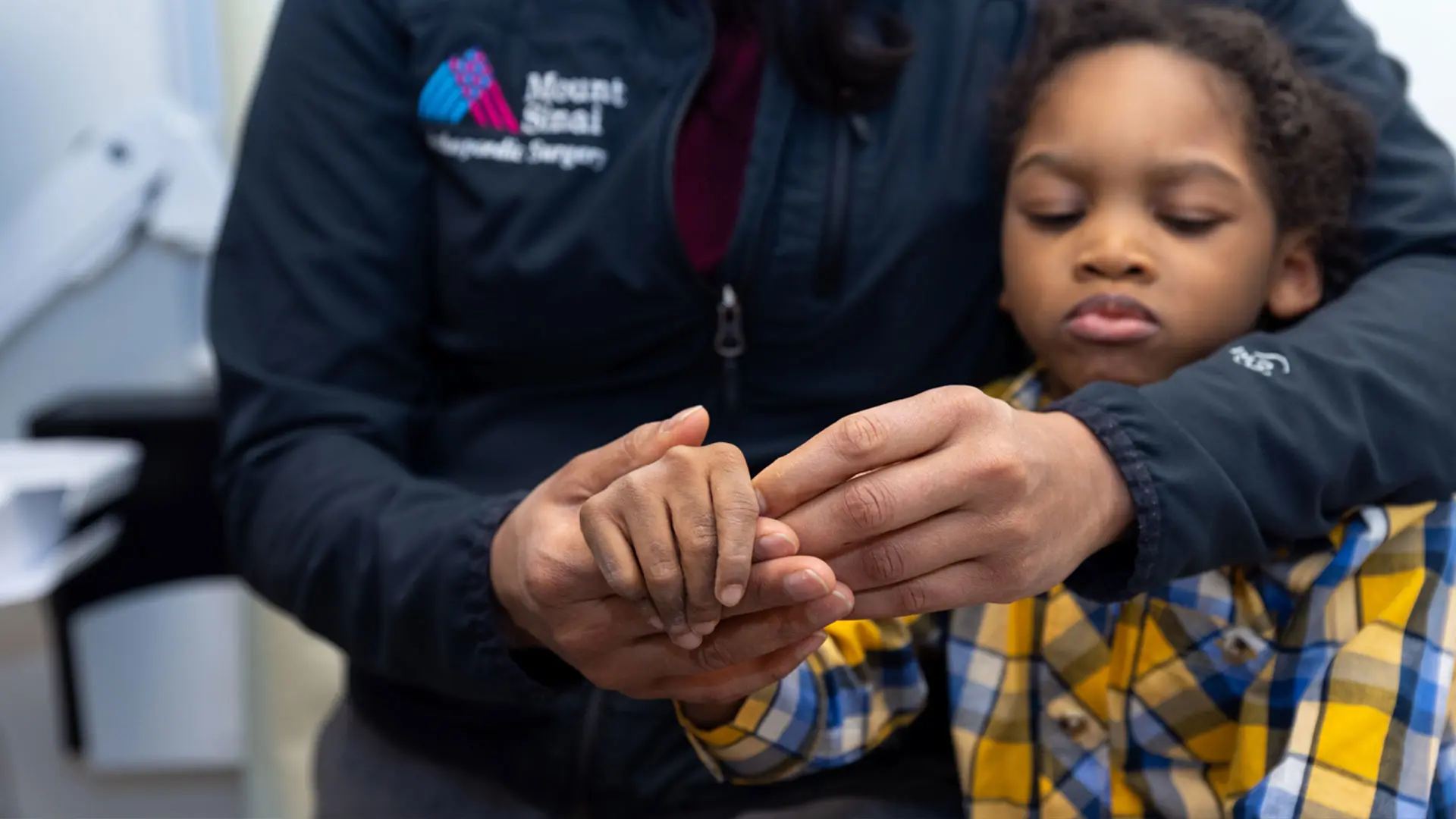
Davanis Bowen, a six-year-old patient with spastic quadriplegia, has his finger range of motion examined.
“By condensing what could be 12 separate visits into one visit, we are able to provide efficient care that enables the providers to have direct interaction with each other,” says Dr. Ranade, who notes that scheduling patient surgeries has accelerated due to the clinic’s integrative approach.
Frequent doctor’s appointments can impact the parent and/or caregiver’s employment as well as continuity of care. This high-demand, and often low-income patient population places extensive stress on parents and caregivers due to both the direct and opportunity costs incurred when caring for a special needs child. Streamlining these visits allows patients to receive their much-needed care while reducing the amount of time off work that family members and caregivers need to request for doctors’ appointments.
Collaborative Approach Improves Patient Care
Given the medical complexity of this patient population, their care requires many physicians working in concert. Neuromuscular patients often have delays in care secondary to delays in provider communication. By having the participating physicians in the same room, seeing patients simultaneously, the providers can participate in real-time discussions and mutual decision-making, which accelerates the delivery of care.
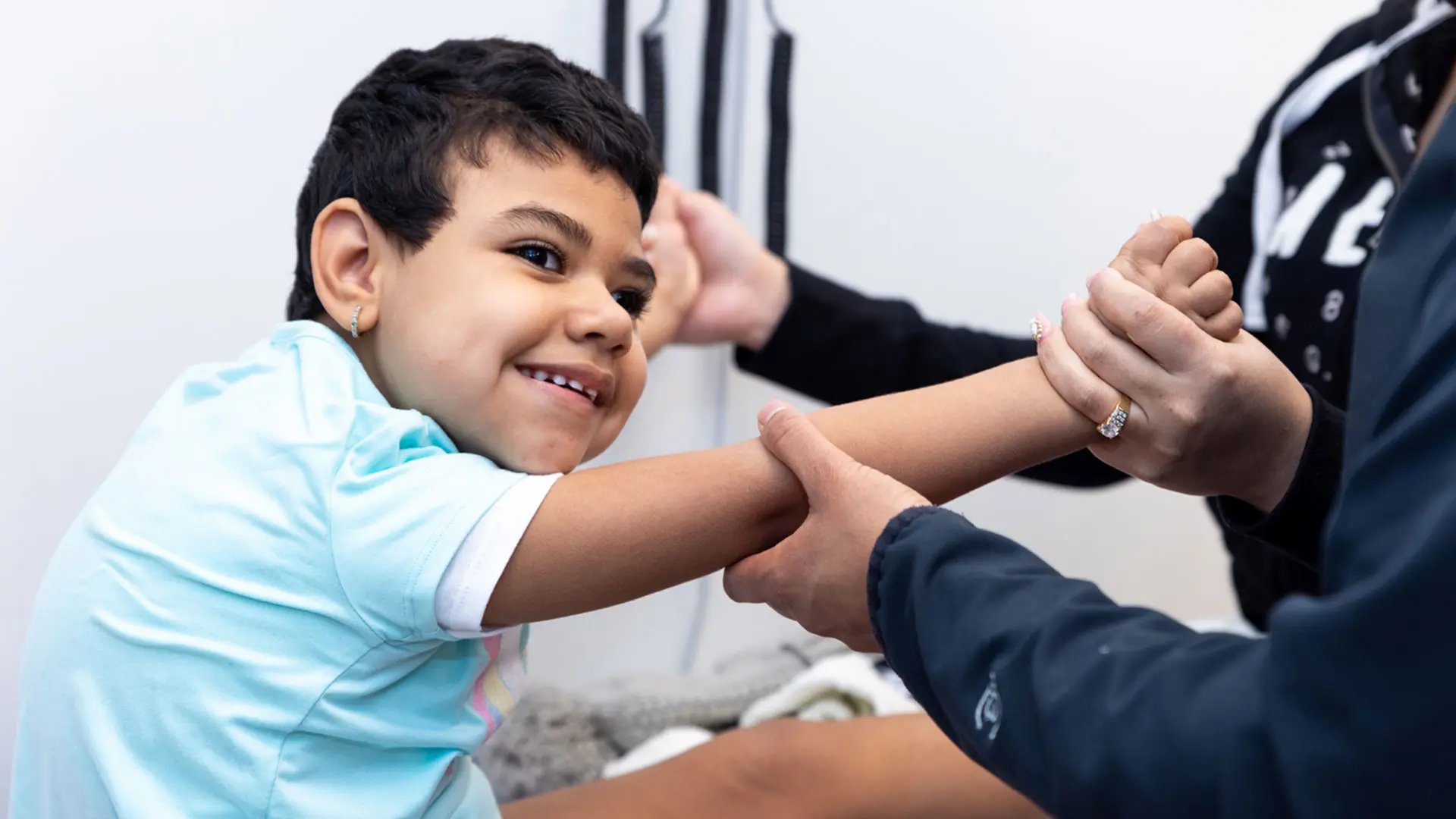
Dr. Ranade evaluates trunk control in Aaliyah Santana, a four-year-old patient with spastic quadriplegia secondary to an anoxic brain injury.
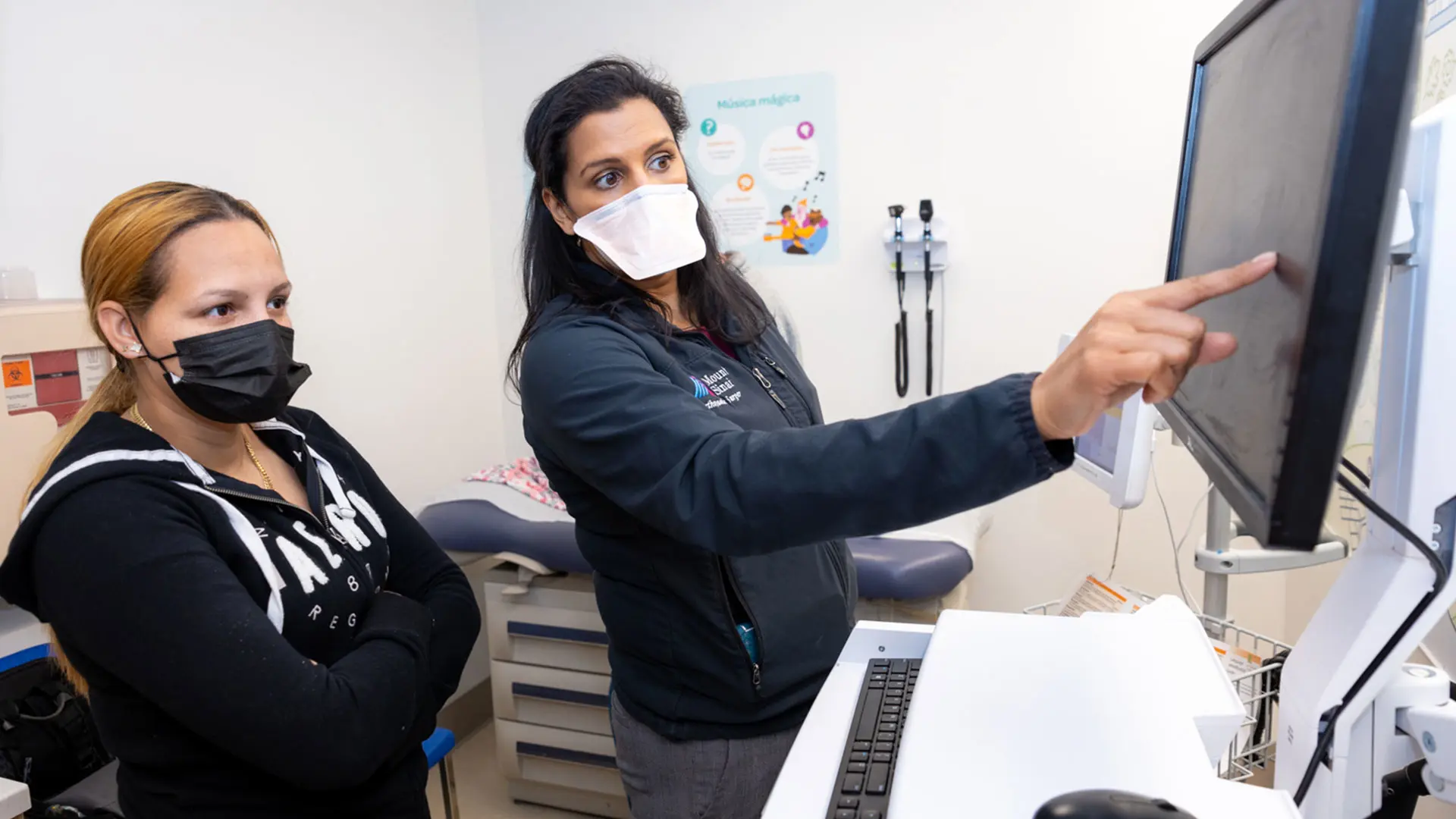
Following evaluation, Dr. Ranade discusses operative intervention with Estaphany Pichardo, mother of Aaliyah Santana.
“This patient population has very holistically intertwined medical issues. If you do not collaborate with other providers during their treatment, the patient does not receive optimal care,” says Dr. Ranade. “By having this group of doctors who work well together, we are able to make a clear plan for the patient. We discuss the patients at the end of every clinic and make sure everyone is on the same page. So, if problems arise, it is easy for us to course correct in real time.”
Additionally, this efficiency may reduce costs in a patient population that requires considerable medical resources. When patients receive surgery in a timely manner, their conditions are less likely to become inoperable. The clinic’s current partner, the Pediatric Visiting Doctors and Complex Care Program, has utilized an effective support structure to coordinate care and reduce emergency and urgent care visits. The Complex Neuromuscular Clinic, in its expanded form, will provide a similar structure for its patients.
The Future of the Clinic
Going forward, Dr. Ranade has even more ambitious goals. Currently, the clinic cares for approximately 60 patients. She would like to quadruple that caseload by expanding services to those outside of the Pediatric Visiting Doctors and Complex Care Program. Additionally, she would like to hire a dedicated nurse practitioner and care coordinator to facilitate ambulance visits and patient appointments, expand the cerebral palsy support group, and establish a seating and orthotics fund for parents and caregivers.
“Most of these kids are on Medicaid and, unfortunately, not all assistive devices are covered,” says Dr. Ranade. “So, if they want a wheelchair, they often cannot have a stroller, a feeding chair, or the car seat needed for transportation. A fund would enable us to buy these devices so patients are not limited to just one seating structure.”
Dr. Ranade also sees an opportunity to integrate with other Mount Sinai programs. For instance, the Abilities Research Center has a gait lab that could be used for the clinic’s more ambulatory patients. Gait analysis could improve patient mechanics and aid physicians in surgical planning. They are also working on adaptive devices, including a video game system that can be used by children with special needs, potentially to form gaming teams for social interaction.
“There is space to do so much,” says Dr. Ranade. “They are often ignored but these kids and families deserve good care.”
Featured
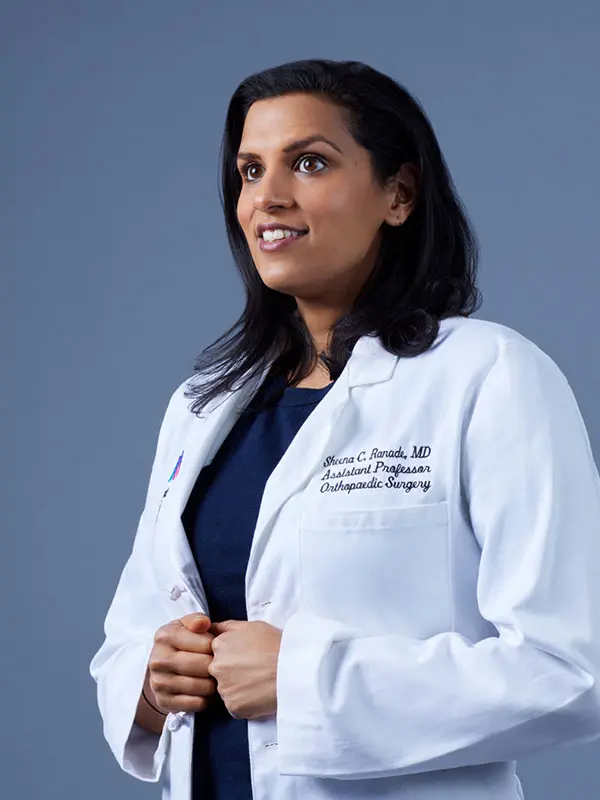
Sheena C. Ranade, MD
Assistant Professor Orthopedic Surgery
